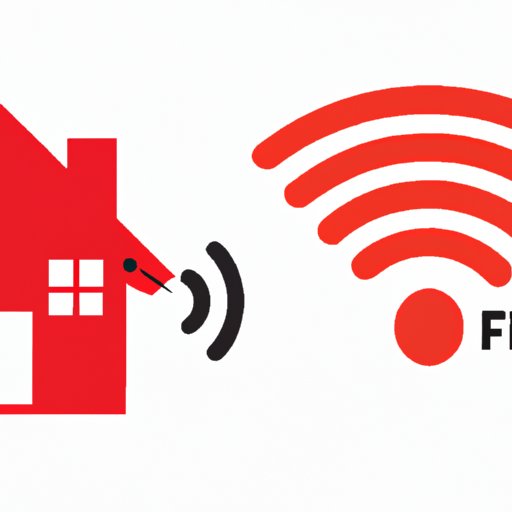
Introduction
Having a strong and reliable WiFi connection is no longer just a luxury but a necessity. With the increasing need to stay connected 24/7, having slow or spotty internet can be frustrating and restricting. This article aims to address this issue by providing a comprehensive guide on how to get WiFi at home and ensure you have a reliable and fast connection whenever you need it.
Here are the six potential ways in which we will cover in this article:
- Setting up an at-home WiFi network
- Choosing the right internet service provider
- Improving WiFi range and connectivity
- Following a budget-friendly guide to WiFi at home
- Troubleshooting WiFi issues
- Comparing traditional and mesh WiFi networks
Setting Up At-Home WiFi Network
The first step in getting WiFi at home is setting up your network. Choosing the right router and modem for your needs is crucial as it will determine the speed and reliability of your connection. Some of the things to consider when picking your equipment include:
- Internet speed package offered by the ISP
- The size and layout of your home, as well as the number of devices you plan to connect to the network
- Compatibility with security measures such as WPA2 encryption
Once you have your equipment set up, you can proceed to configure the network. This usually involves setting a network name and password. It is important to ensure that your network is protected with security measures such as WPA2 encryption to prevent unauthorized access.
Internet Service Providers
Internet service providers (ISPs) are companies that provide internet access to users. They usually offer different packages, each with varying speed and price points. There are many ISPs to choose from, including cable, fiber optic, and satellite providers.
When selecting an ISP, it is essential to consider factors such as speed, cost, and availability. Some of the things to keep in mind when selecting an ISP are:
- Check availability in your area
- Compare packages and prices from different providers
- Determine the connection speed required for your needs
- Read reviews and ask for recommendations from friends and family
Improving WiFi Range and Connectivity
Weak WiFi signals can be frustrating and can often limit where you can use your devices around your home. If you are experiencing connectivity issues, there are several solutions to try. Here are some tips on how to improve WiFi range and connectivity:
- Change the router’s position to reduce signal interference and blockages
- Adjust the frequency setting to increase the range and reduce interference
- Use WiFi extenders to boost the signal and extend the range throughout your home
- Ensure the device’s firmware is up-to-date
- Consider using a powerline Ethernet adapter to create a wired connection between your router and your device
With the above tips, you can improve your WiFi range and connectivity to enjoy seamless internet access in your home.
Budget-Friendly Guide to WiFi at Home
Getting WiFi at home doesn’t have to be a costly venture. There are ways to save money without sacrificing speed and quality. Some of the cost-saving measures you can take include:
- Buying refurbished equipment
- Bundling services such as TV, phone, and internet together
- Downgrading to a lower speed package if you don’t need the high-speed connection
- Looking for promotional deals and discounts from ISPs
By following these cost-saving measures, you can get WiFi at home on a tight budget.
Troubleshooting WiFi Issues
Despite your best efforts, you may occasionally experience issues with your WiFi connection. When this happens, it is essential to know how to troubleshoot the problem. Here is a guide on how to fix some common WiFi issues:
- Slow speed – restart your router or move closer to the router for a better signal
- WiFi signal too weak – try moving the router or use WiFi extenders to boost the signal
- Connection drops frequently – update the device’s firmware or reset your network settings.
- Security issues – ensure that you have enabled WPA2 encryption and change your WiFi password periodically.
Comparison of Traditional and Mesh WiFi Networks
Traditional WiFi uses a single router to provide a connection to all devices, while mesh networks use multiple access points placed throughout the house to provide coverage. Mesh networks are becoming increasingly popular due to their ability to provide better coverage in large homes.
The disadvantage of mesh networks is that they are more expensive than traditional WiFi and are more difficult to set up. It is essential to weigh the pros and cons of each option to determine which one is best for your home.
Conclusion
In conclusion, having a reliable and fast WiFi connection at home is vital in today’s connected world. By following the six potential ways outlined in this article, you can get WiFi at home and ensure that you enjoy a seamless connection. Don’t forget to protect your network with security measures to prevent unauthorized access and always update your firmware to avoid connectivity issues.




